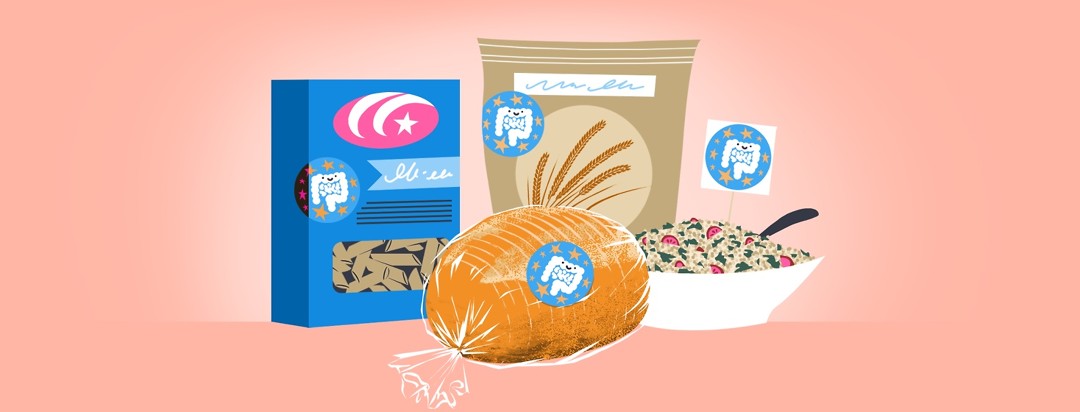Low FODMAP Grains
When it comes to a low FODMAP diet, I find many of my patients struggle with getting enough variety and fiber. I find one of the common mistakes patients make is to avoid grains all together when following a low FODMAP diet-leading to a lot of stress around eating out, building meals or cooking for their family, and often leading to feeling hungry or low energy a lot of the time!
Low FODMAP Grains
In fact, I'd say the majority of my IBS patients who struggle to maintain their weight are avoiding all grains rather than just the high FODMAP ones. Luckily, there are several low FODMAP options that are nutritious, a great source of fiber, and help to maintain your energy levels while on a low FODMAP diet.
- Amaranth (puffed)
- Buckwheat (kernels, flour)
- Chia seeds
- Corn, flour, tortilla
- Flaxseed
- Gluten free bread without FODMAP ingredients, or traditionally made sourdough
- Gluten Free pasta without FODMAP ingredients (rice, quinoa, corn)
- Hemp hearts
- Millet (grain, flour)
- Oats (quick, large flakes, quick, oatmeal)
- Polenta
- Quinoa (quinoa flakes, flour, pasta, grain)
- Rice (white rice, wild rice, brown rice)
- Rice Ramen
- Soba noodles
- Sorghum (flour)
- Teff flour
Fiber
Getting enough fiber can be challenging when following the low FODMAP diet. If buying pre-made items like pasta or bread, be sure to look for the higher fiber option aiming for at least 3 grams of fiber per serving. You can boost up the fiber in homemade foods by adding chia seeds, ground flax, buckwheat or sorghum flour in baked goods. Try adding grated vegetables allowed on a low FODMAP diet into soups or sauces and grated fruits into baked goods allowed on a low FODMAP diet.
Why are whole grains important to include in an IBS diet?
Whole grains are important to include in a healthy diet - especially when you're following a restricted diet like the low FODMAP diet. They provide us with carbohydrates, our body's main source of energy. Carbohydrates help to give us energy, and when we choose whole grains, they're also a source of fiber and protein, which helps to keep our energy levels stable throughout the day.
Whole grains are also important sources of micronutrients such as iron, B vitamins, magnesium, manganese, phosphorus, selenium, and fiber.
Typically, I like to encourage my patients to include whole grains at least 3 meals a day -and aim for variety! It's so easy to get stuck in a rut just eating rice while following the low FODMAP diet, so try to switch it up and try some fun low FODMAP grains! My favorites are buckwheat as a cereal grain for breakfast, quinoa in a salad for lunch, and polenta alongside some pork tenderloin and broccoli florets for supper!
Tips on choosing a low FODMAP pasta or bread
Many times, gluten-free products are inherently low FODMAP - but not always. When you swap out your regular pasta or bread for a gluten-free one be sure to read the ingredients to make sure it doesn’t contain any of the high FODMAP ingredients.
Ingredients to look out for in grain products that are high FODMAP:
- Flours like rye or barley
- honey
- chicory root
- inulin
- molasses
Looking for the right test and texture? I prefer gluten-free pasta that has a blend of ingredients. I find when there is a mix of ingredients they tend to have a better texture and flavor. I prefer the Barilla gluten-free pasta as it mimics wheat pasta very well! In terms of bread, I like sourdough, or the branded low FODMAP breads.
How to include high FODMAP grains
The low FODMAP diet isn't all or nothing. Many times I see patients needlessly avoid gluten during and after the elimination phase. There are many products with wheat you can have, but the portion is the key. Remember, it's not the gluten we're avoiding, it's the fructans in wheat that we're limiting.
For example, these wheat based foods are low FODMAP in the portion listed:
- 5 saltine crackers
- 1/2 cup wheat pasta
- 1 slice of white bread
After the elimination and reintroduction phase, you should be able to include small amounts of wheat up to your determined tolerance in a sitting. By including a variety of grain products, this will add variety to your diet, and help take the stress off of getting enough food in or going out to an occasion serving grain products.

Join the conversation